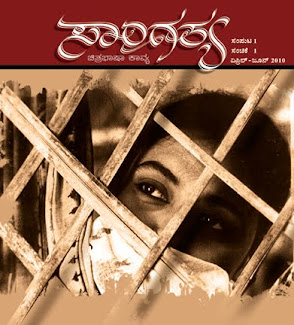This was in 1992. Noted film-maker Sai Paranjape was preparing to shoot her film “Papeeha” in Nagpur forest along with her crew members. Unfortunately, the equipment van which had to reach the forest, met with an accident and there was no possibility of making an alternative arrangement. As it was a small budget film about the plight of a tribal community, Paranajape wanted to raise funds after shooting a part of the film. She told her young cameraman to shoot with whatever equipment he had and also reminded him that, she would drop the project itself if he pleads his helplessness. There were only two options before the cinematographer; either to shoot risking his career or allow the director to shelve the project. That young and enthusiastic product of Film and Television Institute (FTI) decided to take risk. With one baby light and some thermocol pieces he started canning film. He used patches of light in the forest and bounced them with the help of thermocol to shoot day light effects. When, he was about to shoot a three level shot, one baby light, which was his lone saviour, blew up. Undeterred by the obstacles in his way, he used petromax lights and completed the shooting. The film received rave reviews from critics, especially that particular shot. The cinematographer who dared to risk his career was G.S. Bhaskar, who later worked for “Saaz” and “Disha” directed by Sai Paranjape. Now Bhaskar is the darling of both experimental and commercial film makers. He has worked with Nagesh Kukanoor (“Hyderabad Blues”), Girish Kasaravalli (“Bannada Vesha”, “Tabarana Kathe”), Sadanand Suvarna (“Kubi Mattu Iyala”), T.S. Nagabharana (“Nagamandala” and “Neela”), M.S. Sathyu (“Ghalige” and “Ijjodu”) and Ramesh (“Accident”). He assisted A.K. Bir as second unit cameraman for Richard Attenborough’s “Gandhi”. Bhaskar, who recently completed shooting of “Ijjodu” is engaged in improving visual literacy among the young generation. He was in Mysore recently to conduct a workshop on “Appreciating Cinematography” for the Mysore Film Society to educate the youngsters on the role of the cinematographer and introducing basic concepts of cinematography. It was the cultural environment of the 70s Bangalore which helped him choose cinematography as his career, says Bhaskar, disciple of K.K. Mahajan. “It was in the 70s that I met Girish Kasaravalli who was assisting B.V. Karanth for “Chomana Dudi” and it is he who introduced me to real movie camera. Observing my keenness in cinematography, he suggested me to join FTI and guided me in joining the Institute. Subrato Mitra, K.K. Mahajan and A.K. Bir who conducted workshops in the Institute influenced me a lot. After completing my course I decided to work with K.K. Mahajan and approached him too. But at that point he had many assistants and asked me to wait for some time, and I returned to Bangalore. When I decided to assist Devadhar (of Shankarnag’s “Accident” fame) for his new assignment, Bir sent word for me. I was assigned to work as second unit cameraman for Attenborough’s ‘Gandhi’ It was my first exposure to real shooting and my “real” learning commenced then”, recalls Bhaskar. Though Bhaskar works for both art and commercial films, he sees greater challenge in the latter. “Realism is my forte. Is it necessary that we glamourise? he asks. Given an opportunity between the colour and black and white, Bhaskar definitely prefers black and white. “Colour is attractive. It has an energy in itself. I am comfortable with black and white for two reasons; I have learnt art of black and white as a student. Colour is still new to me. In my opinion, we have not seen even 20 per cent of the possibility of colour. To bring higher meaning for the shot it is necessary to understand metaphysical meaning of colour” he elaborates. When asked about the ideal relationship between director and cinematographer, he compared that to “good marriage”. “Fortunately, every director with whom I worked provides the script without grumbling. I need the script to assess my lighting requirement and to plan lighting scheme,” he notes. While every cinematographer aspires to become director, Bhaskar is averse to the idea. “As a practitioner of cinematography, I have become a technician. You have to grow beyond this role to understand the nuances of film making,” he reasons. Though Bhaskar worked in the most adverse situations, he cites first schedule of “Papeeha” as his most challenging job. “During shooting of ‘Bannada Vesha’ Girish wanted a surreal sequence to capture the sublime image of protagonist Shambu. Despite my commitment to realistic school, I kept the light in front of camera for the first time. That shot propelled me 10 years ahead,” he recalls. He explained similar challenge he faced while shooting for “Nagamandala”. “We were supposed to shoot the love making sequence of Naga and Rani. A slight mistake would have made the scene obscene. Both Bharana and I, postponed this scene till the last day of the shooting. It was art director Shashidhara Adapa, who came to our rescue and things easy for me. His detailing of the scene made things less complicated,” says Bhaskar, still breaking into a sweat when he thinks of the scene. Bhaskar has great regret for the treatment meted out to still photographers in the film Industry. “But I had real experience what a still photographer can do while shooting for “Ijjodu”. For my fortune Nimai Ghosh, official photographer of Satyajit Ray was the still photographer for the film. Instead of asking the artists to freeze, he used to take stills from the angle; I shot the film, by asking the actors to enact the scene again. That is Nimai Ghosh,” says Bhaskar, metaphorically doffing his hat. (pic courtesy : THE HINDU)
Muralidhara Khajane thrown light on Cinematographer G..S.BHASKAR's third eye.
Friday, November 13, 2009
His third eye
 2:23 AM
2:23 AM
 saangatya
saangatya






0 comments:
Post a Comment